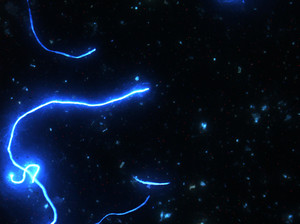
Synthetic microfibers are ubiquitous in the environment, including in the oceans and the atmosphere. Microfibers are invisible to the naked eye given their small size, and thus we breathe, eat and drink them without being aware of it. There is clearly an urgent need for increasing our knowledge regarding plastics and synthetic microfibers in the environment and their geographical distribution, especially in the wake of environmental and human health issues already increased by climate change.
Deheyn’s lab has many ongoing projects in relation to the biodegradation of microfibers and its geographical distribution. One of the projects is in collaboration with Lenzing, an Austrian textile company developing natural cellulose fibers. One of the lab projects is to assess the biodegradability of their fibers and their bioaccumulation under oceanic conditions and under a more controlled environment. Other projects in relation to the geographical distribution of microfibers in terrestrial and oceanic environments are also currently taking place in the aim of understanding better the effect of the population density along different coastlines globally.
